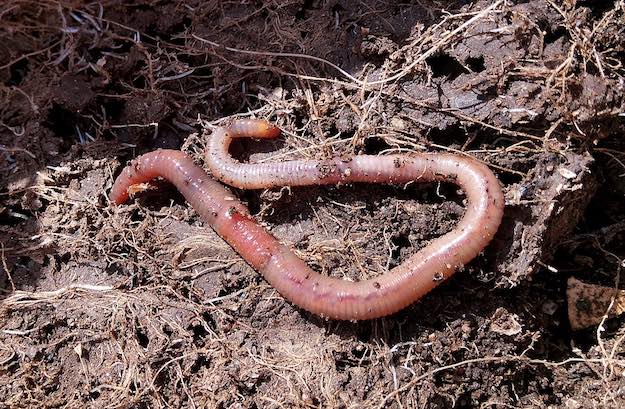How To Improve Soil For Vegetable Garden
Want to know how to improve your garden soil this spring growing season? Knowing how important the quality of your soil is, I'm sure you'll appreciate these simple steps to ensure a healthy garden soil for your plants!
Step-By-Step Guide To Building Healthy Garden Soil
Every green thumb is fully aware of the essence of healthy organic garden soil. A simple experiment of growing seeds in different types of soil has proven the huge difference between plants grown in rich soil to those grown in inferior soil. It prompted growers to make compost, with the end product hailed as 'black gold' among growers. I think we are initiated as certified gardeners once we've learned how to make compost for our gardens. But before we even go there, check out this guide to properly improve and build your garden soil!
How to Improve Garden Soil
Step One: Soil Testing
It is essential to do a soil test before you decide to amend your garden soil in any way. This is an initial step for you to determine the current state of your soil. You can test your soil for its pH and texture.
Test Soil pH
Testing soil pH allows you to determine whether your soil is basic or acidic. Different plants call for different pH levels in the soil to grow properly. There are pH testing kits you can purchase in garden supply stores but you can do soil testing without equipment but using common household items instead.
Testing Soil Texture

Take a handful of soil in your garden and squeeze it. If it easily shifts and doesn't hold up, your soil is sandy, which means it doesn't have the ability to hold moisture and nutrients for your plants. If on the other hand, your soil is gooey when wet or very stiff when dry, then you have clay soil. Its particles are compacted, making it impossible to absorb nutrients, allow drainage, or encourage root growth.
Step Two: Improving Soil Texture
Depending on your soil type, you can amend soil according to its needs. Sand will need something to hold the particles together while clay can be broken down, and organic matter added to both.

Adding Organic Matter
The magic that is organic matter is just what you need to change the chemical and nutritional structure of your soil. Adding organic matter to sandy soil will improve its capacity to hold water and nutrients. If your sandy garden soil is closer to the sea, chances are salt levels are high, which may not be good for most garden plants. Make sure to use plant-based organic matter because they have the lowest salt level.
Tilling Soil

Amend clay soil structure by breaking it down loose to improve drainage and allow nutrients to penetrate for your plants. You can use a pickaxe or shovel to break down large chunks of clay soil and a tiller or garden fork to break it down into even smaller pieces. Then you can add organic matter and compost to accomplish better nutrient absorption. Find out more about amending your clay soil here.
Step Three: Correcting Soil Chemistry
Different plants call for different soil pH levels. Having tested the acidity, alkalinity, and salinity of your soil, you can now amend as you see fit for the plants you want to grow.
Amending Soil pH
You can add wood ash or lime to make your soil less acidic while alkaline soil, which is referred to as 'sweet soil' by gardeners can be amended with compost. You can also add mulches that are acidic, like pine needles, to your soil to make it less alkaline. While there is no way to amend saline soils, you can decrease salt levels in the soil by improving its drainage, so the salt gets washed off.
Growing Crops Compatible To Soil pH

Immediate amendment of soil pH can only be done aggressively, meaning with non-organic chemicals, but there's no need for you to do that if you know what to grow in the right soil pH. Beets, beans, broccoli, onions, potatoes, garlic, and leafy green, thrive best in acidic soil. While artichoke, asparagus, cantaloupe, Swiss chard, oranges, and peaches can grow in slightly alkaline soil. Growing asparagus in slightly saline soil is even encouraged since asparagus originated in rocky coastal areas.
Step Four: Boosting Soil Nutrients

Lastly, boosting the soil nutrients in plants is the most important step you can do to ensure good growth. Nutrients present in your soil could make or break your gardening ventures this season. Adding organic fertilizers is one sure way to boost soil nutrients in the soil, including these two more tips below:
Growing Cover Crops
You may get your soil amended and improved for a growing season but a lot of things could happen to soil left idle. Eventually, the nutrients present in the previous season can deplete from a lot of factors like erosion and drought. To boost or retain the nutrients and organic matter in the soil, consider cover crops. Cover crops, otherwise known as 'green manure', is an effective and organic way to continually add organic matter and nutrients to your soil.

Encouraging Macro And Micro-Organisms

This is simply making some compost or allowing the process of decomposition in your soil. There are a lot of ways to make this possible. The simple act of spreading organic materials like fallen leaves to rot in the ground is a method itself. Microorganisms break down these materials while bigger organisms in the ground such as worms and insects feed on these microorganisms, giving off a well-digested end product. This, in turn, boosts the nutrient level present in the soil organically and naturally.
Watch this video for the step-by-step guide to improving your garden soil:
With the growing season kicking off this spring, equip your garden with nutrient-rich soil for a picture-perfect garden. Now that you know how to go about improving your garden soil, you can now go all out growing flowers and vegetables this growing season!
What do you think about these simple steps to improving your garden soil? Share your thoughts and leave them in the comments section below.
Now you know the essence of healthy organic garden soil. Find out what materials will make you a healthy organic compost.
Don't forget to follow us on Facebook, Instagram, Pinterest, and Twitter for more smart gardening ideas!
How To Improve Soil For Vegetable Garden
Source: https://gardenseason.com/improve-garden-soil/
Posted by: robinscomagese.blogspot.com

0 Response to "How To Improve Soil For Vegetable Garden"
Post a Comment